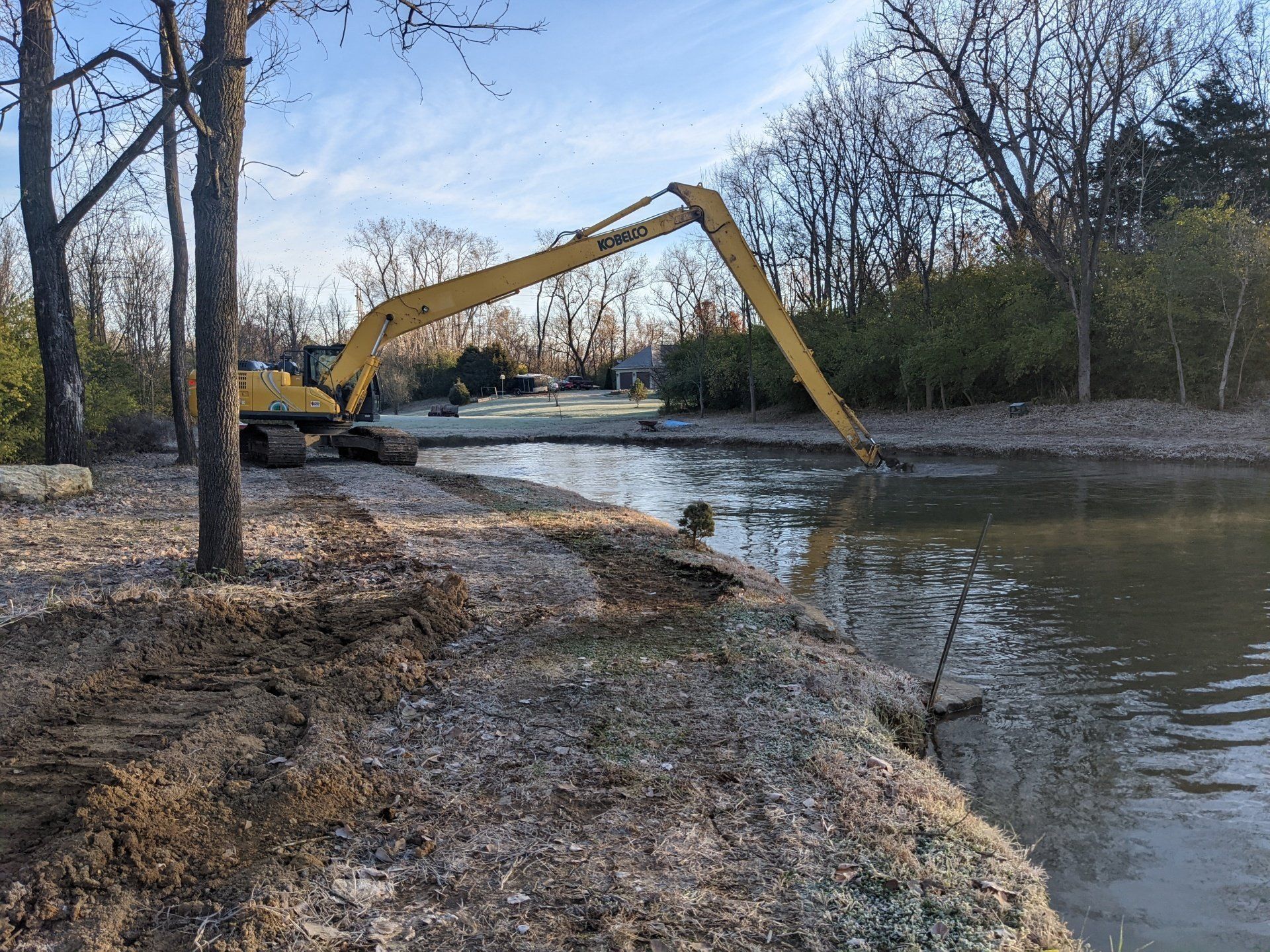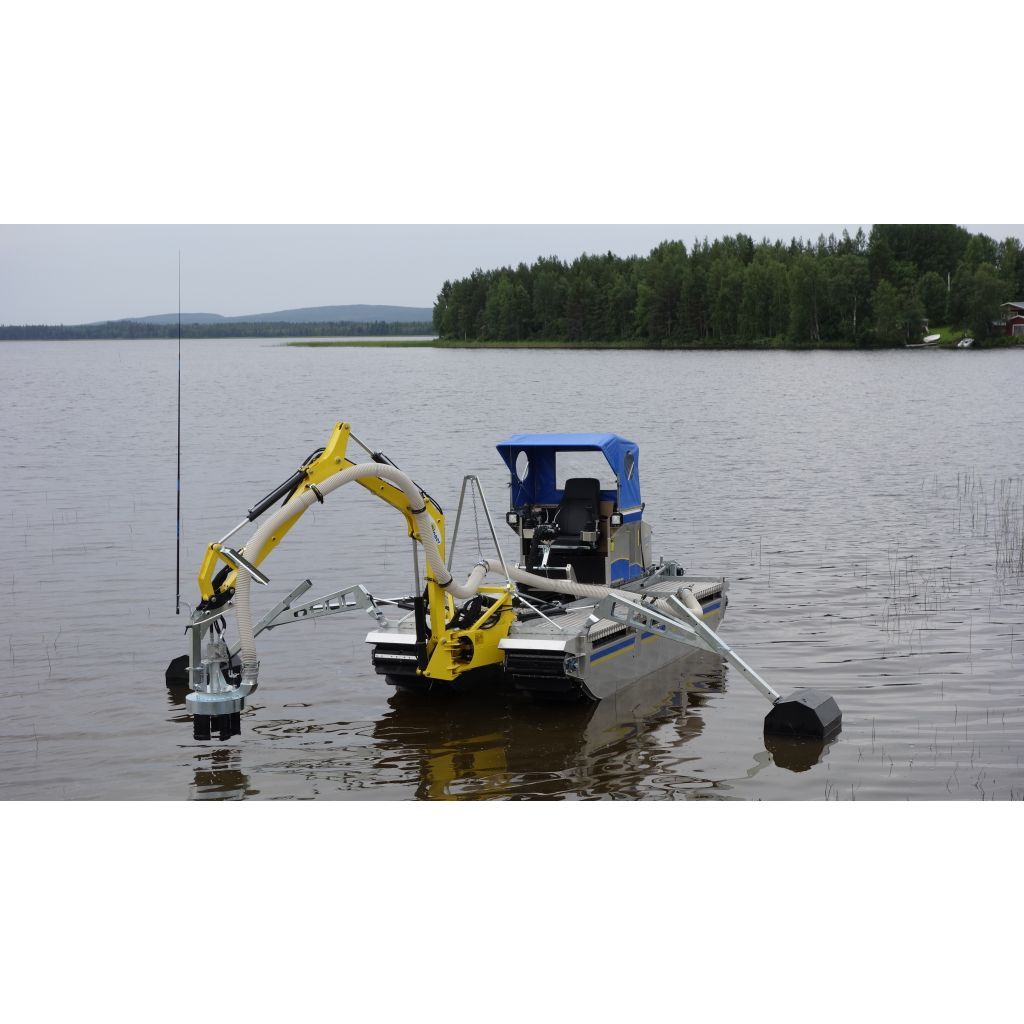Mechanical and Hydraulic Dredging
- High Production Equipment Reducing Your Cost
- Over 18 Years of Experience
- Locally and Family Owned
- High Production Equipment Reducing Your Cost
- Over 18 Years of Experience
- Locally and Family Owned
The Right Dredging Method for Your Situation
Every dredging job comes with its own challenges, and no one knows that better than SES Stormwater Erosion Specialties. We have more than 18 years of experience in dredging, and we're fully equipped to perform multiple types of dredging.
Some areas need to be dredged mechanically, while some require hydraulic dredging. The size of the job determines the size of the machinery needed. Our experts will review your job, discuss the options, and determine how it can be done efficiently. We can handle the permitting process for you — some permits will dictate the type of dredging that's been approved.
We're the only company in the area that offers mechanical and hydraulic dredging with large and small machines, so you won't need to worry about us getting into something we can't handle. We stand behind our work. To schedule an estimate on your dredging project, please call us today.
Mechanical Dredging
Broadly speaking, mechanical dredging uses an excavator to scoop the sediment out of the body of water. In some situations, mechanical dredging is the better choice.
- There are a lot of stumps, trees, or debris.
- The sediment disposal area is not close, so the material has to be hauled away by truck. (The distance a hydraulic dredge can pump sediment is limited.)
Truxor is capable of mechanical and hydraulic dredging, as well as aquatic vegetation removal for shorelines and wetland areas.
We're able to use our 60-foot-long reach excavator to remove sediment from areas close to shore, including ponds, lakefronts, canals, inlets, boat slips, and other sites.
Hydraulic Dredging
Hydraulic dredging creates a slurry with the sediment at the bottom of the body of water and pumps it to the surface. The slurry is directed into floating and land-based pipes and then into the discharge site. The discharge site may be a containment area/settling pond or geotextile tubes for dewatering. We're fully equipped to handle all types of hydraulic dredging.
The basic steps in hydraulic dredging include the following.
- A cutterhead digs up the settled solids in the body of water and creates a slurry.
- Powerful slurry pumps draw the slurry into the discharge piping system and into the discharge site.
- Polymers may be added to the slurry to assist in the dewatering process by flocculating the solids, making them heavier and more able to sink to the bottom.
- The cleaned water is discharged back into the body of water.
Hydraulic dredging with geotextile containment tubes is the best practice for handling sediment that may require special care, such as hazardous waste, contaminated soil, industrial waste, municipal sludge, marine sediments, and the material from a paper mill or chemical company. SES Stormwater Erosion Specialties has earned HAZWOPER 40-hour certification and is able to handle hazardous waste cleanups.
The sediment is pumped into long tubes made from high-strength porous textiles that allow the contents to dewater (dry out). In some cases, polymers may be added to the sediment to improve separation from the water. As the material dries, it reduces in volume and weight.
If the material is uncontaminated and there's a local need for it, it can be used for landscaping or erosion control at the site. If the material is not needed or requires special handling (such as industrial waste), it can be hauled away.
SES Stormwater Erosion Specialties is fully equipped to handle the entire hydraulic dredging process from beginning to end. To get an estimate on your commercial, industrial, residential, or municipal dredging project, please call today.




Share On: